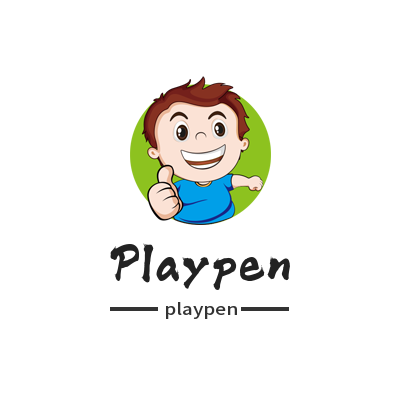I bought a crawling mat and a playpen for my baby, and together with Xiaolongbao, I renovated the living room at home and set up a play area dedicated to Coke!
Many people will ask: crawling mats and fences take up so much space, is it really necessary to buy them?
My opinion is: it is necessary!
In addition to being used for babies to practice crawling, crawling mats also have many uses.
Babies who are one or two months old can practice raising their heads while lying on their stomachs. When they are three or four months old, they can practice turning over. When they are older, they can practice sitting, crawling, and walking. These exercises are safer on a mat than on a bed. There are so many! In addition, babies can play with toys, read picture books, and play games on the crawling mat, so the crawling mat can be used for a really long time.
The baby fence is also a safety net for babies, especially when there is only one person taking care of the baby at home. However, there are also some small disadvantages to using a playpen, such as the space will appear small and cramped, some babies are unwilling to stay in the playpen, etc. My opinion is: If there are at least two people taking care of the baby at home and can keep an eye on the baby's condition, then you can use a crawling mat instead of a fence.

In order to choose a safe, secure, good-quality, and cost-effective crawling mat and playpen for my baby, I did my homework in advance!
Now let me introduce to you my buying guide for crawling mats and fences.
When choosing a crawling mat, I will screen it from three dimensions:
1. Choose material
The materials of crawling mats usually include EVA, EPE, XPE, and PVC.
EVA material has poor resilience, short life, and odor; EPE material is cheap, but hard and easy to deform; XPE material has good elasticity, no odor, and is lightweight; finally, PVC crawling mats are the softest and most comfortable, but The price is very high.
Taken together, EVA and EPE materials have many shortcomings, and they are both flammable materials, so it is not recommended to buy them; XPE crawling mats are the most cost-effective.
2. Choose style
The main styles of crawling mats include spliced, folding and integrated.
The advantage of the spliced type is that the size and shape of the mat can be changed at will, making it easy to disassemble and clean. The disadvantage is that the gaps in the splicing joints are easy to accumulate dust, leakage, and have poor firmness. There are also places where babies prefer to use hand buckles to splice. Overall The service life will be relatively short.
The biggest selling point of the foldable is that it is easy to store and carry. But I personally think this is a rather useless function, because once the crawling mat is used at home, the baby will basically play on it every day and will not store it at all. If you travel, you will generally not take the crawling mat with you.
Finally, the integrated crawling mat needs to occupy a fixed size of space, but has a flat surface, high comfort, and long service life. It is my preferred style.
For infants who are not yet able to walk, stumbling and stumbling are commonplace, so the anti-fall performance of crawling mats is very important. It is usually recommended that this type of babies use a crawling mat with a thickness of about 2cm. For older babies, you can choose a thinner crawling mat.
After screening in these three dimensions and reading reviews of many brands, I bought this crawling mat from Parkron.
It is slightly more expensive than most domestic brands of XPE crawling mats, but it is relatively cheap among Korean brands.
The middle of the mat is made of high-density XPE material, and the surface is made of silk cloth. It feels comfortable, has good resilience, is waterproof and moisture-proof, and the hemming workmanship is also very exquisite.
I bought the fence from the same brand. Firstly, the fences and crawling mats of the same brand can match the size exactly. Secondly, I also prefer its simple gray and white style.
When choosing a fence, I mainly look at three aspects:
The first is the height of the fence. According to the national mandatory standard GB 29281-2012 "Safety Requirements for Playpens and Similar Cribs", the height of the baby fence should be greater than 60cm.
However, in fact, many brands of fences only have a maximum height of more than 60cm, and the minimum height does not meet the requirements, which will cause the risk of babies climbing over.
Second I look at the gaps and holes in the fence. If the gaps and holes are too small, they may pinch the baby's fingers; if they are too large, they may pinch the limbs or head and neck. In addition, if there are multiple large holes on a fence, they may become stepping points for the baby, posing a risk of climbing.
The third aspect mainly depends on the handling of some details, such as whether there are burrs on the fence, whether the lock is easy for the baby to open, whether the screws are convex, how the anti-slip effect is, etc. These are all areas worth noting.
Since I bought the crawling mat and playpen, my baby has been playing on it every day and is very satisfied with it!
Including its material, workmanship, and the handling of some details, they are all done very well~

